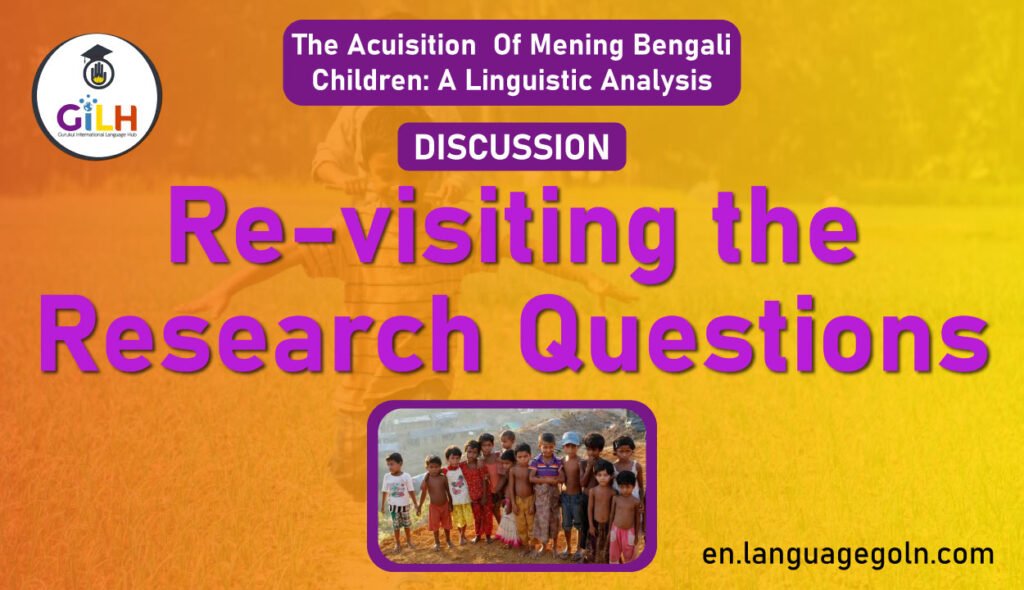Today our topic of discussion is- Re visiting the research questions
Re visiting the research questions
1. What is the role of surrounding environmental input on Children’s meaning acquisition?
2. How does categorization influence children’s meaning acquisition?
3. What is the relation between semantic acquisition and lexical learning in first language acquisition?
By investigating the above research questions I am trying to provide a detailed description of the nature of the Bengali children’s meaning acquisition process. Semantic representations of their language will help to assume how they map form-meaning.
Inquiry into the ways of language categorization to extract meanings will also be helpful to identify the stage-wise language development. Moreover, I believe analyzing another important issue like “the role of lexical learning’ will add up to the field of child language development and also to the already published knowledge.
Every healthy human child succeeds in learning the language. As a result, child language acquisition process is typically taken for granted; many people think of the
language learning process as one of the basic instincts of breathing or blinking. Yet learning
a language is one of the most nuanced abilities a human being can ever master. This acquisition process includes many multifarious factors of a language like- phonology, morphology, semantics and syntax.
The purpose of this study is to investigate the meaning acquisition process as one of the vital areas of a child’s overall language development. It intends to explore the regularities of child’s meaning making process (special focus on Bengali children), which is a combination of general evolutionary progressions, cognition, social routes and psychological factors together
(MacWhinney, 2005). Accordingly, successive meaning acquisition requires early emotive and expressive language work as pre-requisites. Like-
(a) Receptive language: understanding or comprehending a language.
(b)Attention and concentration: to perform an activity without interruption and to
hold a sustained effort long enough to be carried out.
(c) Pre-language skills: means of communication without the use of words. It includes
gestures, facial expressions, imitation, joint attention and eye contact.
-Play skills: involvement in self motivated activities that are usually related to
pleasure, enjoyment. These activities may or may not be object oriented.
– Pragmatics: use of language within social situations.
-Motivation: desire to communicate with others.
– Fine motor skills: in order to develop alternative forms of expressive language, such
as signing (if verbal language does not develop).
few of these skills (like comprehension) develop in children from the pre- linguistic stage. But the use of gestures, facial expressions along with utterances, joint attention or even early word combinations start usually at around 18 months (sometimes earlier or over). So, I have focused on analyzing data that will explain the meaning acquisition process with all of its defining features.
See more

